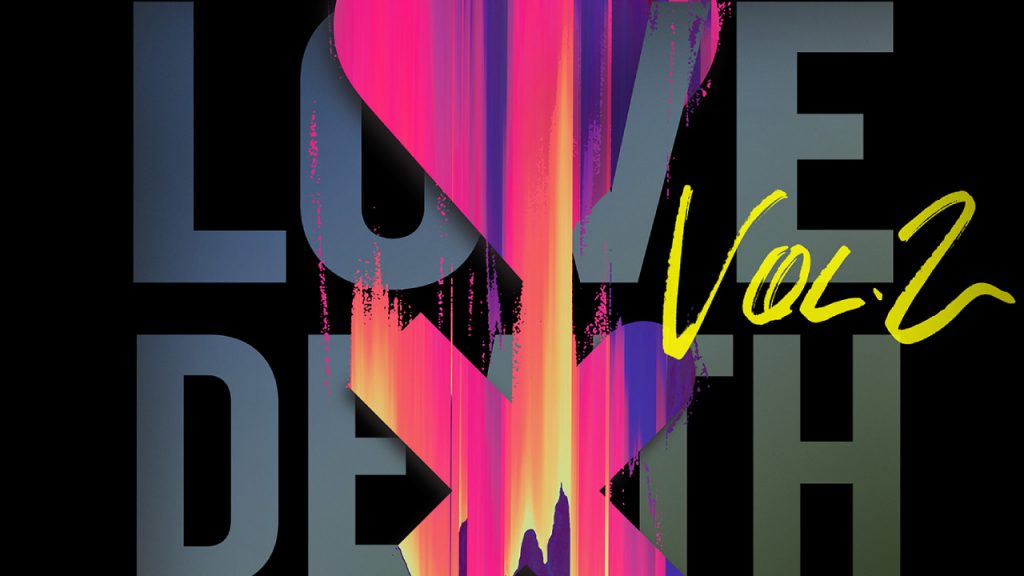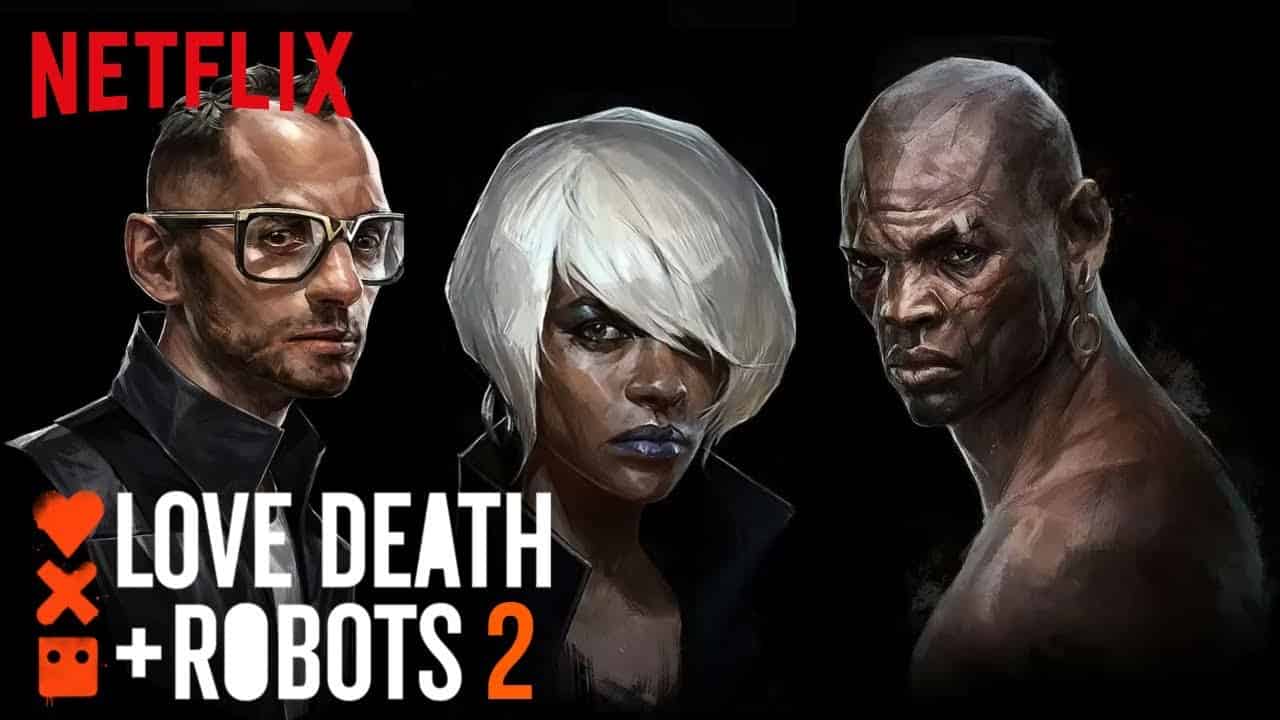TV SEASON INFO
- Genre: Science Fiction & Fantasy
- Network: Netflix
- Premiere Date: May 14, 2021
- Exec. Producers: David Fincher, Jennifer Miller, Josh Donen, Tim Miller
- IMDb:8.3
- Starring: Michael B. Jordan, Elodie Yung, Joe Dempsie
- Release year: 2021
“This is your life now, to hide and wander. Never a moment’s rest in this barren wasteland that is now your existence.”

There’s a level of freedom to storytelling that anthology series allow that’s often impossible elsewhere. The format has exploded over the past decade, especially when it comes to genre storytelling. Love, Death & Robots doesn’t just benefit from the versatility of its anthology format, but also the limitless nature of animation, as well as the boundary-breaking nature of science fiction and horror. The first season of Love, Death & Robots hit the ground running and contained an incredibly eclectic collection of stories that effectively showcased the opportunities that a show like this allows. It’s absolutely valuable to have more Love, Death & Robots in production, but this second batch of episodes, while gorgeous and entertaining, feels more simplistic than its debut season.
These eight new episodes are all set in very different worlds, but they approach comparable themes. “Automated Customer Service” and “Life Hutch” both approach the wonders and dangers that surround radical advancements in technology, albeit in tonally different contexts. They both unpack how the inherent security that technology provides can be a double-edged sword and more dangerous than it’s worth. This gets looked at in a mundane and extreme scenario, but both examples highlight the efforts that technology goes to in order to achieve their prime directive, even when that goal veers wildly off course or seems antithetical to the original mission.
“Ice,” “Pop Squad,” and “Snow in the Desert” each explore fascinating questions over unique dystopias. Overpopulation, consumer culture, and the beauty of the individual versus the collective get broken down in creative ways. Several of these stories operate as cautionary lessons for society over the increasingly pervasive nature of technology and the progressive laziness of humanity.
Alternatively, “The Tall Grass,” “All Through the House,” and “The Drowned Giant” all break down the fear and glory over the unknown. Paradigms that are both unexpected and reassuring get recontextualized through terrifying and surprising new lights, whether it’s the comforting image of Santa, monstrous invaders, or a beached giant. Despite these fantastical visuals, these stories are deeply interested in what’s familiar from these surreal images. They all experiment with pieces of humanity that have warped into frightening and challenging ideas. These stories embrace the unknown and how these changes point towards a future that feels both familiar and impossible. There’s a charming level of naivety to all of these segments, which begin in familiar ways, only to barrel into the untold. It’s almost as if the intention is that these episodes are artificial intelligence’s interpretation of these familiar human customs and touchstones.
It doesn’t necessarily feel like this new addition of Love, Death & Robots squanders its opportunity, but there’s only so much that it can do across these episodes. There’s a more playful energy to a lot of the stories this time around and there’s considerably less focus on gender constructions, which is honestly helpful as it explores broader and more universal areas. All of these stories examine what it truly means to be alive and to live, and there’s incredible world building across the board. Some of these episodes are only a few minutes long, but they still feel like they could be fleshed out to contain entire movies or television series.

There’s rampant death, murderous robots, and vicious beasts in these stories and a certain level of tension is ever-present. “The Tall Grass” and “All Through the House” are the only entries that feel like pure horror, the latter of which presents a creature that makes Krampus look like a Mogwai. However, the majority veer into hard, nihilistic sci-fi. The final installment, “The Drowned Giant,” may be the weirdest and most effective of the lot. Based on a short story by J.G. Ballard and the only entry in the season that’s written and directed by Tim Miller, it’s a stunning examination of the uncanny where the whole world feels only a few degrees off axis from our own, but that’s still enough to feature unbelievable changes. It’s also strangely the entry that has the least to do with robots and technology, with a perspective that almost views humanity itself as a cold and distant piece of machinery. Hopefully more of this ambitious weirdness will continue in the show’s future and it won’t feel the need to hide behind aggressive action and life or death stakes against machines. Sometimes asking the right gentle question is more than enough.
Love, Death & Robots wears its love and passion for science fiction and horror on its sleeve, but the eye-popping animation is just as important to this series. There are some wildly varied art styles across these episodes that stand out even more when played back-to-back-to-back. “Ice,” by Passion Animation Studios, looks like a graphic novel come to life or a heightened Gorillaz music video, and it’s such a nice contrast to some of the more polished CG ventures like “Pop Squad” and “Snow in the Desert.”
They’re honestly so pristine that they look live-action at times and often feel like the kind of fancy opening cutscene that would kick off a PlayStation era Final Fantasy game or Death Stranding, in the case of the latter. There’s this realistic approach to many of the segments that beautifully juxtaposes with the more stylized and cartoonish worlds that also get explored. ”Automated Customer Service” and “All Through the House” look like Pixar shorts that have smoked some bad weed. In contrast, the mottled, impressionistic, almost clay-like look in “The Tall Grass” is one of the most striking aesthetics of the lot.
Love, Death & Robots looks beautiful, but one detriment to this new season is that there’s simply not enough of it. There are eight episodes here as opposed to the 18 from the first season. These eight episodes come out to just over 80 minutes, which makes this very easy to digest and play more like a sci-fi anthology film rather than a full season of television. This season doesn’t feature any stories that are markedly longer or shorter than anything from the first season. The longest entries hover around 15 minutes and the shorter is closer to five, but the majority sit comfortably in the middle at ten minutes. Every episode in this season is also a short story adaptation, which was the norm in season one, but not for every episode. This gives each episode a strong foundation since they pull from authors like Harlan Ellison, J.G. Ballard, and Joe Lansdale, but this direction hopefully doesn’t mean that there won’t be any completely original stories in the future for Love, Death & Robots.
Also Read : Top 10 Best Animes For Beginners
On the whole, this new dose of Love, Death & Robots feels slightly more disposable than what came before it. It makes for a quick, easy binge, but it’s still a lot of fun and offers a lot of variety across these eight episodes. Season three is set to be another eight episodes and it might have been a better strategy to release both of those installments at once instead of two shorter halves. That being said, hopefully the next installment aims even higher and gets increasingly playful with its approach to genre. There are some fantastic ideas and deconstructions of archetypes across these episodes. As a whole, it may feel somewhat empty, but specific visuals will linger with the audience long after.
Love, Death & Robots doesn’t reinvent the wheel, but it allows that wheel to take over humanity and ignite a robot apocalypse.
Season Two of Love, Death & Robots is now available to stream on Netflix.

